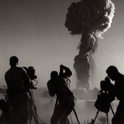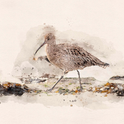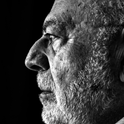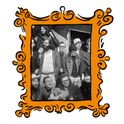Things are always falling off Anselm Kiefer’s work. Straw, sunflower seeds, chunks of concrete, you name it. Curators at the museums to which he sends his work have fastidiously collected the fallen debris and returned it to him, presumably in the expectation that he might want to repair the damage. But Kiefer, whose work is the subject of a large-scale retrospective at the Royal Academy of Arts this autumn, just shrugs. He may be one of the great artists of our time; but he is not, it turns out, a preservationist. He’s keener on ruins.
Like many artists, when he is near to finishing a work, Kiefer will often get frustrated or succumb to a sense of dissatisfaction. He has learned to recognise this feeling and to respond, writes Richard Davey, the author of an essay in the show’s catalogue, by reintroducing “chaos”:
“He lets go of the work, deliberately withdrawing… so that his paintings and sculptures can take on a life of their own. He allows nature and chemical reactions to take over the creative process. Paintings in process are burnt, slashed, buried or exposed to the elements. Canvases are laid on the ground to have paint and diluted acid poured on them, while works on lead are placed into electrolytic baths and left to stand and corrode. Many paintings are put inside locked shipping containers, to await their moment of rebirth in the dark; when these voids are reopened later, it is as if Kiefer is seeing these works for the first time.” At times he has gone even further. He has covered his works in earth, and has even been known to strafe his paintings with bullets. In a corner of his studio in Croissy, on the outskirts of Paris, he has a jet aircraft half-buried in sand.
Provocatively, but perhaps inevitably, book-burning is also in Kiefer’s repertoire: he has produced many weighty books, some from sheets of lead, many with carbonised pages, deliberately calling to mind the Nazi delirium, and Heinrich Heine’s prophecy: “Where they have burned books they will end in burning human beings.”
Kiefer was born in a town called Donaueschingen in Germany’s Black Forest region on 8th March 1945. The town, which is just north of the Swiss border, was both a rail hub and the base of a military garrison. It came under intensified Allied bombing in the period prior to Kiefer’s birth, and the situation continued to deteriorate in the following months. “During the daytime when I was a baby,” Kiefer later said, “my grandparents and my mother had to go into the woods to protect us from the bombing.” His parents’ house remained intact. But their landlords, who lived next door, were not so lucky: their dwelling was blown to pieces.
The ruin next door turned into Kiefer’s playground. Before the age of six, when his family moved, he spent long stretches of his boyhood playing in the rubble. He would take loose bricks home to build new, multiple-storey structures, which became more ambitious by the month.
He was doing much the same thing decades later when—already a world-famous artist—he turned his sprawling, 35 hectare studio-estate in the south of France, formerly a silk factory, into a massive, constantly morphing artwork in its own right, replete with ruin-like concrete towers, freestanding staircases and an underground network of crypts and tunnels. But by this time Kiefer’s playfulness—like his absurdist sense of humour, which is a central but often overlooked aspect of his work—had taken on darker overtones.
Kiefer came to notoriety in 1969 with a series of photographs of himself dressed in his father’s army uniform performing the Nazi salute—which had been banned in Germany since the end of the war—in various historically-loaded locations around Europe: the Colosseum in Rome, Paestum, south of Naples, Arles in the south of France.
Kiefer has said that during his school years, mention of the Nazi era was scrupulously avoided. But this omission only fuelled his fascination. When he heard a recording of speeches by Adolf Hitler, Joseph Goebbels and Hermann Goering, it triggered something deep inside him. “The sound goes right through the skin,” he said. “Not only through the ears and the head. I was simply shocked. And that’s how it began.” For Kiefer, the two series of saluting photographs (called Occupations and Heroic Symbols) were “performances… acts of mourning” and—against the general inclination to forget—of remembering.
Hitler’s ruinous legacy, although far from being Kiefer’s only subject, has found its way into all corners of his work. Even as he draws on ancient history and mythology, 20th-century literature and philosophy, cosmology, physics, and alchemy, his work is always in dialogue with this more recent history.
[gallery ids="25072,25074,25268,25271,25274"]
Kiefer uses a vast panoply of materials in his art, each of which have intricate symbolic meanings. Studiously parsed, they trigger a kind of spiritual-historical giddiness. There is the straw, for instance, that symbolises the hair of the German prison guard Margarethe in Paul Celan’s poem “Death Fugue.” There are the seven flames that represent Margarethe’s antagonist in the same poem, the concentration camp prisoner Shulamith, reduced to ashes in the furnaces. There is the lead Kiefer uses, again and again, to invoke the weight of history and the flux and potential of the human spirit. There are the sunflowers and crows that refer to specific paintings by Van Gogh, and the concrete that connects in his mind with spiritual striving, and with the modernist architect, Le Corbusier. On it goes. Sometimes, the allusions feel pointed, precise, and powerfully charged. At other times, it’s all quite bewildering.
Overwhelmed and confused, perhaps, by his work’s undisguised ambition, critics have occasionally accused Kiefer of getting into an uncomfortably intimate dance with Nazi tropes. When he showed his work, alongside his friend Georg Baselitz, in the West German Pavilion at the Venice Biennale of 1980, one critic, Werner Spies, accused Kiefer of inflicting on the public “an overdose of the Teutonic.”
The accusation would have been offensive if it weren’t also true. An overdose of the Teutonic is exactly what Kiefer foists on us all. But he does so with his eyes wide open, and there is insight, empathy, and great moral energy in his approach. (Werner Spies would go on to become one of the artist’s great champions).
Kiefer’s efforts to get to grips with Nazism emerge most viscerally in two of his overriding obsessions: the aesthetics of the ruin and the motif of the forest. Much of Kiefer’s early work, as Christian Weikop points out in another of the Royal Academy catalogue’s essays, revolved around forests, trees and wood grain. In 1971, Kiefer had a studio in the Oden Forest. He made a painting, Man in Forest, which showed the artist himself in a nightshirt holding a flaming branch in the midst of a dense pine forest. “I think I illuminate the forest in such a way that it could ignite,” he said, comparing himself to Prometheus. A key Kiefer woodcut from 1978, Ways to Worldly Wisdom: Arminius’s Battle, alludes to the ancient Battle of the Teutoburg Forest, in which the German soldier Hermann (also known as Arminius) triumphed over three Roman legions. The battle was a nation-defining event, to which Hitler often referred.
Kiefer’s preoccupation with forests chimes uncomfortably with the Nazi valorisation of Germany’s landscape. Again and again, Hitler and his henchmen defined the rooted, forest-dwelling Aryan race against the “homeless, desert-roaming” Jews. In 1935, Heinrich Himmler commissioned research on the role of the forest in German culture and history. And the following year, Hitler presented winners at the Berlin Olympics with sapling oaks, a symbol of Aryan supremacy. (In a strange irony, one of the four oaks presented to the African-American athlete Jesse Owens now towers over the Cleveland high school where he trained.)
“Our stories begin in the forest,” Kiefer has said, echoing this rhetoric. His statement is made bitterly ironic not just by the Nazi associations, but also by his own beginnings: his family’s forced sanctuary in the forest as his nation collapsed around him under an onslaught of Allied fire-bombing.
Rubble also piles up relentlessly in Kiefer’s work. He has always been infatuated with the poetry of the ruin. It’s why he lets his sculptures and paintings degrade. It’s why he abandons them to chaos, subjects them to the elements, and lets them develop a patina in which colours and tones seem to merge into greys and pale yellows, so that they achieve the poetic unity of tint common to ruins and old, once-vivid fabrics.
Hitler, too, cherished the poetry of ruins. He commanded his architects to build in stone because he wanted his buildings to project beauty and power long after the society that built them had expired. Stone made for beautiful ruins. This idea—Ruinenwert, or “ruin value”—was pioneered by his favourite architect, Albert Speer.
What makes Kiefer so dizzying, and at times so profound, is that, although he is forever conscious of Nazi tropes and ideas, he is also involved in an endless attempt to recoup them, to salvage meaning and beauty and something even deeper—something frankly cosmic—from the black hole of Nazism.
Kiefer once described painting as “a ceaseless shuttling back and forth between nothing and something.” Ruins operate in his imagination as an analogue of that incessant movement. The idea of the ruin represents a kind of deeper human dispensation, far from the perverse logic of the Nazis. It is a notion that was beautifully articulated in 1911 by the German sociologist Georg Simmel in an essay called simply “The Ruin.”
The ruin, for Simmel, represented a deeper reality than the pristine work of art. If art or architecture represent “the most sublime victory of spirit over nature,” as he wrote, the ruin represents a shift in the balance of power between these two opposing forces—in which nature regains the upper hand. In the ruin, nature transforms the work of art “into material for her own expression, as she had previously served as material for art.”
Simmel was telling us something Kiefer has taken to heart. He believed that the ruin, for all its poetry, was a reminder of the limits of aesthetics (limits Hitler never recognised: he wanted his fascist aesthetics to enter into every field of endeavour, especially military endeavour). When we perceive aesthetically, claimed Simmel, we are effectively demanding that the contrary forces of existence—nature and spirit—be frozen in equilibrium. But such equilibrium is an illusion, because life is always in flux.
In the ruin, we see the bigger picture, not just the false aesthetic moment. And, although it is, in the end, art that Kiefer is making, I believe he aims for a similarly broad perspective in his work. In its embrace of decay, its toying with rubble, his work is a valiant attempt at solving the problem of the “merely” aesthetic—the feeling that, as Theordor Adorno famously put it, “there can be no poetry after Auschwitz.” His work is an attempt at summoning, instead, that deeper reality perceived by Simmel, reclaiming the idea of “ruin value” from the perverted logic of Hitler and Speer.













